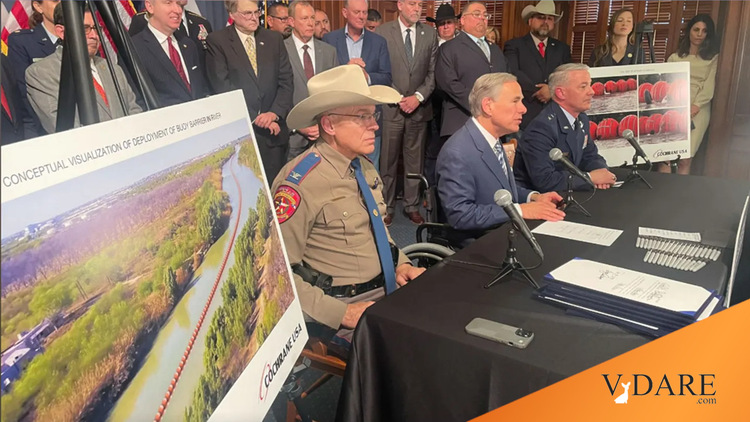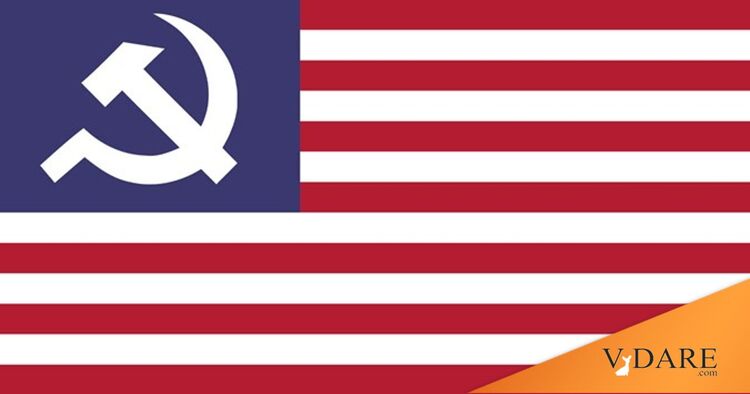From the New York Times Magazine:
Letter to the Editor: Historians Critique The 1619 Project, and We Respond
Five historians wrote to us with their reservations. Our editor in chief replies.Published Dec. 20, 2019
Updated Dec. 21, 2019, 4:42 p.m. ETThe letter below will be published in the Dec. 29 issue of The New York Times Magazine.
RE: The 1619 Project
We write as historians to express our strong reservations about important aspects of The 1619 Project. The project is intended to offer a new version of American history in which slavery and white supremacy become the dominant organizing themes. The Times has announced ambitious plans to make the project available to schools in the form of curriculums and related instructional material.
We applaud all efforts to address the enduring centrality of slavery and racism to our history. Some of us have devoted our entire professional lives to those efforts, and all of us have worked hard to advance them. Raising profound, unsettling questions about slavery and the nation’s past and present, as The 1619 Project does, is a praiseworthy and urgent public service. Nevertheless, we are dismayed at some of the factual errors in the project and the closed process behind it.
These errors, which concern major events, cannot be described as interpretation or “framing.” They are matters of verifiable fact, which are the foundation of both honest scholarship and honest journalism. They suggest a displacement of historical understanding by ideology. Dismissal of objections on racial grounds — that they are the objections of only “white historians” — has affirmed that displacement.
On the American Revolution, pivotal to any account of our history, the project asserts that the founders declared the colonies’ independence of Britain “in order to ensure slavery would continue.” This is not true. If supportable, the allegation would be astounding — yet every statement offered by the project to validate it is false.
Myself, I kind of like the NYT’s crackpot theory more than do the five distinguished (but white) historians.
My personal crackpot theory of the American Revolution is that it was motivated less by the urge to keep blacks down than by the urge to conquer the North American continent from the American Indians and their European allies.
You can see something like this in the evolution of Ben Franklin’s thought. In 1751 he wrote a massively important immigration restrictionist pamphlet entitled Observations Concerning the Increase of Mankind, in which he asserted that even without immigration, the population of the American colonies, which were largely confined at the time to the narrow strip east of the Appalachian crest, would continue to double every 20 or 25 years due to the low population density of the colonies causing high wages and low land prices, which led to marriage being earlier and more universal in America than in crowded Europe.
Franklin’s estimate of the American colonists’ vigorous natural growth hit Enlightenment intellectuals like a bombshell. Previously, European thinkers had tended to assume that growth of biological species tended to peter out as material things tended to get tired and worn out with use. Population growth in Western Europe had been slow, so the example of population growing inexorably in British America, as put forward by the distinguished and well-informed American, came as a shock.
Franklin’s implicit idea that population would instead expand relentlessly until limited by resources, competition, or grim self-restraint galvanized both Malthus and Darwin—we have Darwin’s copy of Malthus in which he underlined Malthus’s citation of Dr. Franklin.
So, because as countless realtors have explained: “Real estate, they ain’t making anymore of it,” Franklin called for limiting immigration to America to merely the inhabitants of the British Isles.
Franklin published his pamphlet in 1754, when suddenly the English colonies in America started making more real estate to fill up.
That year the young George Washington got into a firefight with French and Indian troops where the Appalachian boundary with the vast Midwest was least distinct: in western Pennsylvania at the headwaters of the Ohio River where Pittsburgh now stands.
This set off the French & Indian War, which became the global Seven Years War (World War Zero). By 1760, Franklin had lost interest in immigration restriction and instead had become the most brilliant demographic theorist of empire. In a 1760 pamphlet, he pointed out that the great American midwest comprised the world’s largest expanse of little exploited fertile territory, and that whichever empire controlled it in 1900 would likely have the manpower to rule the world in the 20th Century. The key strategic steps to the English-speaking ruling the world were to not let the French have control over the two rivers that granted access to the middle of North America: the St. Lawrence at the Rock of Quebec and the Mississippi at New Orleans.
 The government of England followed Franklin’s advice on not giving up Quebec, but George III’s Tory-leaning ministers were less sympathetic to the expansionist-minded American colonists, whose greed for land had helped get Britain in an almost ruinously expensive war, which, luckily, they’d won. So the Proclamation of 1763 put a hold, in theory, on settlement west of the Appalachians. And in general King George III’s government was unsympathetic toward Franklin’s vision of a British Empire in 1900 where the weight of political power would be in North America rather than in Britain through force of number, especially because of the lack of aristocrats in America.
The government of England followed Franklin’s advice on not giving up Quebec, but George III’s Tory-leaning ministers were less sympathetic to the expansionist-minded American colonists, whose greed for land had helped get Britain in an almost ruinously expensive war, which, luckily, they’d won. So the Proclamation of 1763 put a hold, in theory, on settlement west of the Appalachians. And in general King George III’s government was unsympathetic toward Franklin’s vision of a British Empire in 1900 where the weight of political power would be in North America rather than in Britain through force of number, especially because of the lack of aristocrats in America.
George III’s government tried to bring the rambunctious colonists under more control so they wouldn’t start more world wars do to their expansionism. And the Crown disdained giving political representation in Westminster to the swelling population of America, fearing its huge numbers of yeomen and religious dissenters would overwhelm institutions such as aristocracy and the Established Church.
So, my crackpot theory of the Revolution is that it had more to do with the American desire to beat up on the poor Indians and take their land, and that the Crown was reluctant to help the colonists do that.
But because I have my own personal crackpot theory of the American Revolution, I’m not all that dismissive or hostile toward the NYT having their own personal crackpot theory either.
Some of the other material in the project is distorted, including the claim that “for the most part,” black Americans have fought their freedom struggles “alone.” …
The 1619 Project has not been presented as the views of individual writers — views that in some cases, as on the supposed direct connections between slavery and modern corporate practices, have so far failed to establish any empirical veracity or reliability and have been seriously challenged by other historians. Instead, the project is offered as an authoritative account that bears the imprimatur and credibility of The New York Times. Those connected with the project have assured the public that its materials were shaped by a panel of historians and have been scrupulously fact-checked. Yet the process remains opaque. The names of only some of the historians involved have been released, and the extent of their involvement as “consultants” and fact checkers remains vague. The selective transparency deepens our concern.
We ask that The Times, according to its own high standards of accuracy and truth, issue prominent corrections of all the errors and distortions presented in The 1619 Project. We also ask for the removal of these mistakes from any materials destined for use in schools, as well as in all further publications, including books bearing the name of The New York Times. We ask finally that The Times reveal fully the process through which the historical materials were and continue to be assembled, checked and authenticated.
Sincerely,
Victoria Bynum, distinguished emerita professor of history, Texas State University;
Bynum is the author of The Free State of Jones that was made into a 2016 movie starring Matthew McConaughey.
James M. McPherson, George Henry Davis 1886 emeritus professor of American history, Princeton University;
“He received the 1989 Pulitzer Prize for Battle Cry of Freedom: The Civil War Era. McPherson was the president of the American Historical Association in 2003…”
James Oakes, distinguished professor, the Graduate Center, the City University of New York;
Author of The Radical and the Republican: Frederick Douglass, Abraham Lincoln, and the Triumph of Antislavery Politics.
Sean Wilentz, George Henry Davis 1886 professor of American history, Princeton University;
Wilentz sees himself as reviving the pro-Democratic Party tradition of Arthur Schlesinger Jr., who vindicated Jefferson and Jackson.
Gordon S. Wood, Alva O. Wade University emeritus professor and emeritus professor of history, Brown University.
“He is a recipient of the 1993 Pulitzer Prize for History for The Radicalism of the American Revolution”
These are big name historians, but they are all white.
The New York Times responds:
Editor’s response:
Since The 1619 Project was published in August, we have received a great deal of feedback from readers, many of them educators, academics and historians. …
The letter from Professors Bynum, McPherson, Oakes, Wilentz and Wood differs from the previous critiques we have received in that it contains the first major request for correction. We are familiar with the objections of the letter writers, as four of them have been interviewed in recent months by the World Socialist Web Site.
The World Socialist Web Site tends to publish some solid history-related opinionizing from a pedantic leftwing perspective. For example, I find their reviews of history-based movies to be helpful. They tend to feature an anti-identity politics, old-fashioned workers of the world unite point of view.
Here are the WSWS’s interviews with Gordon Wood, James McPherson, Victoria Bynum, and James Oakes. Here’s an interview with black political scientist Adolph Reed Jr. as well.
We’re glad for a chance to respond directly to some of their objections.
… While we welcome criticism, we don’t believe that the request for corrections to The 1619 Project is warranted.
The project was intended to address the marginalization of African-American history in the telling of our national story and examine the legacy of slavery in contemporary American life. We are not ourselves historians, it is true. We are journalists, trained to look at current events and situations and ask the question: Why is this the way it is? In the case of the persistent racism and inequality that plague this country, the answer to that question led us inexorably into the past — and not just for this project. The project’s creator, Nikole Hannah-Jones, a staff writer at the magazine, has consistently used history to inform her journalism, primarily in her work on educational segregation (work for which she has been recognized with numerous honors, including a MacArthur Fellowship).
Basically, it’s The Bell Curve question once again: If we utterly rule out of consideration all the facts and logic in The Bell Curve, then how can we explain why only 7 blacks passed the Stuyvesant HS entrance exam in 2019, despite decades of massive spending to uplift black performance? As each year brings us further into the Post-1960s future, the answer for why blacks aren’t achieving more must lie far in the past, such as in 1619.
But of course the answer can’t lie even further back than 1619, such as in 1618 or in the t ens of thousands of years when, as geneticist David Reich has pointed out, humanity was split into two basic large populations: the Out-of-Africans and the Still-in-Africans.
It just can’t, because looking further back than 1619 would diminish the guilt that could be imposed upon white Americans to give their money to black Americans.
Though we may not be historians, we take seriously the responsibility of accurately presenting history to readers of The New York Times. The letter writers express concern about a “closed process” and an opaque “panel of historians,” so I’d like to make clear the steps we took. We did not assemble a formal panel for this project. Instead, during the early stages of development, we consulted with numerous scholars of African-American history and related fields, in a group meeting at The Times as well as in a series of individual conversations. (Five of those who initially consulted with us — Mehrsa Baradaran of the University of California, Irvine;
She’s an Iran-born law professor, author of How the Other Half Banks.
He’s a white sociologist, author of a book on how evil landlords evict saintly tenants.
and Kevin M. Kruse, both of Princeton University
Kruse, who is white, is an actual professor of history, but his field is 20th Century conservatism. He is the author of White Flight: Atlanta and the Making of Modern Conservatism.
; and Tiya Miles
Miles, who is black, is a professor of history. “Miles offers courses on African American women, Native American women, abolitionist women, and “Black Indian” histories and identities.” Her books tend to be about black women who are descended from Indian princesses.
and Khalil G. Muhammad, both of Harvard University
He is a black historian who writes about race and crime.
— went on to publish articles in the issue.)
So, while the World Socialist Web Site has assembled a far more distinguished and relevant set of American historians, the New York Times’s crew has more Grievance Studies Diversity Pokemon Points.
… Valuable critiques may come from many sources. The letter misperceives our attitudes when it charges that we dismiss objections on racial grounds. This appears to be a reference not to anything published in The 1619 Project itself, but rather to a November Twitter post from Hannah-Jones in which she questioned whether “white historians” have always produced objective accounts of American history. As is so often the case on Twitter, context is important. In this instance, Hannah-Jones was responding to a post, since deleted, from another user claiming that many “white historians” objected to the project but were hesitant to speak up. In her reply, she was trying to make the point that for the most part, the history of this country has been told by white historians (some of whom, as in the case of the Dunning School, which grossly miseducated Americans about the history of Reconstruction for much of the 20th century, produced accounts that were deeply flawed), and that to truly understand the fullness and complexity of our nation’s story, we need a greater variety of voices doing the telling. …
Sincerely,
Jake Silverstein
Editor in chief
But as you may recall, the New York Times’ editor Dean Baque t let slip in August the actual intent of the 1619 project when he explained that it was intended to do what the Times’ flopped RussiaGate conspiracy theory failed to do: Get Trump!
Baquet: We had a couple of significant missteps, and I know you’re concerned about them, and I am, too. But there’s something larger at play here. This is a really hard story, newsrooms haven’t confronted one like this since the 1960s. It got trickier after [inaudible] … went from being a story about whether the Trump campaign had colluded with Russia and obstruction of justice to being a more head-on story about the president’s character. We built our newsroom to cover one story, and we did it truly well. Now we have to regroup, and shift resources and emphasis to take on a different story. I’d love your help with that. As Audra Burch said when I talked to her this weekend, this one is a story about what it means to be an American in 2019. It is a story that requires deep investigation into people who peddle hatred, but it is also a story that requires imaginative use of all our muscles to write about race and class in a deeper way than we have in years. In the coming weeks, we’ll be assigning some new people to politics who can offer different ways of looking at the world. We’ll also ask reporters to write more deeply about the country, race, and other divisions. I really want your help in navigating this story.
But I also want to [inaudible] this as a forum to say something about who we are and what we stand for. We are an independent news organization, one of the few remaining. And that means there will be stories and journalism of all kinds that will upset our readers and even some of you. I’m not talking about true errors. In those cases, we should listen, own up to them, admit them, show some humility—but not wallow in them—and move on. What I’m saying is that our readers and some of our staff cheer us when we take on Donald Trump, but they jeer at us when we take on Joe Biden. They sometimes want us to pretend that he was not elected president, but he was elected president. And our job is to figure out why, and how, and to hold the administration to account. If you’re independent, that’s what you do. The same newspaper that this week will publish the 1619 Project, the most ambitious examination of the legacy of slavery ever undertaken in [inaudible] newspaper, to try to understand the forces that led to the election of Donald Trump.
… Baquet: OK. I mean, let me go back a little bit for one second to just repeat what I said in my in my short preamble about coverage. Chapter 1 of the story of Donald Trump, not only for our newsroom but, frankly, for our readers, was: Did Donald Trump have untoward relationships with the Russians, and was there obstruction of justice? That was a really hard story, by the way, let’s not forget that. We set ourselves up to cover that story. I’m going to say it. We won two Pulitzer Prizes covering that story. And I think we covered that story better than anybody else.
The day Bob Mueller walked off that witness stand, two things happened. Our readers who want Donald Trump to go away suddenly thought, “Holy shit, Bob Mueller is not going to do it.” And Donald Trump got a little emboldened politically, I think. Because, you know, for obvious reasons. And I think that the story changed. A lot of the stuff we’re talking about started to emerge like six or seven weeks ago. We’re a little tiny bit flat-footed. I mean, that’s what happens when a story looks a certain way for two years. Right?
I think that we’ve got to change. I mean, the vision for coverage for the next two years is what I talked about earlier: How do we cover a guy who makes these kinds of remarks? How do we cover the world’s reaction to him? How do we do that while continuing to cover his policies? How do we cover America, that’s become so divided by Donald Trump? How do we grapple with all the stuff you all are talking about? How do we write about race in a thoughtful way, something we haven’t done in a large way in a long time? That, to me, is the vision for coverage. You all are going to have to help us shape that vision. But I think that’s what we’re going to have to do for the rest of the next two years.
This is no longer a story where the Washington bureau every week nails some giant story by [Washington correspondent] Mike Schmidt that says that Donald Trump or Don McGahn did this. That will remain part of the story, but this is a different story now. This is a story that’s going to call on different muscles for us. The next few weeks, we’re gonna have to figure out what those muscles are.











